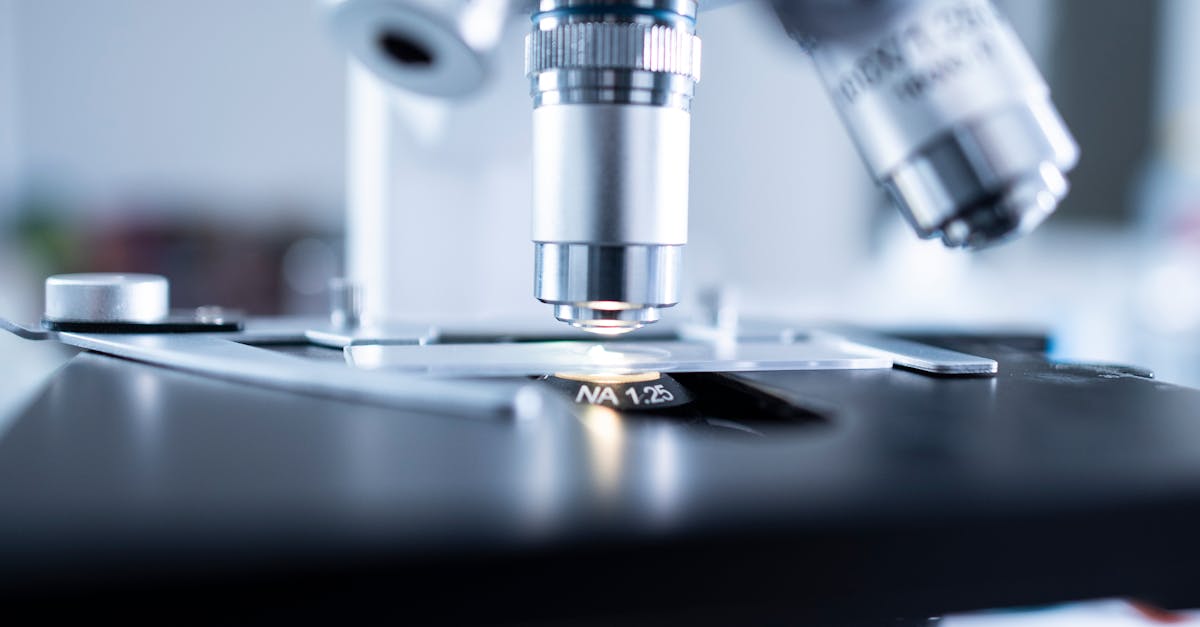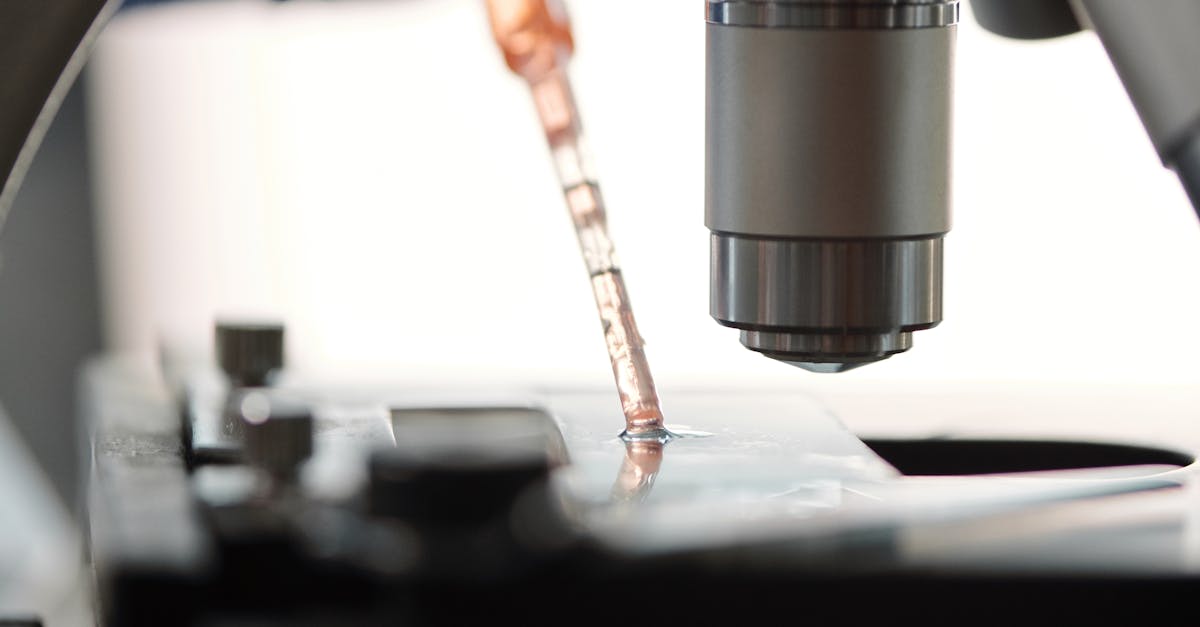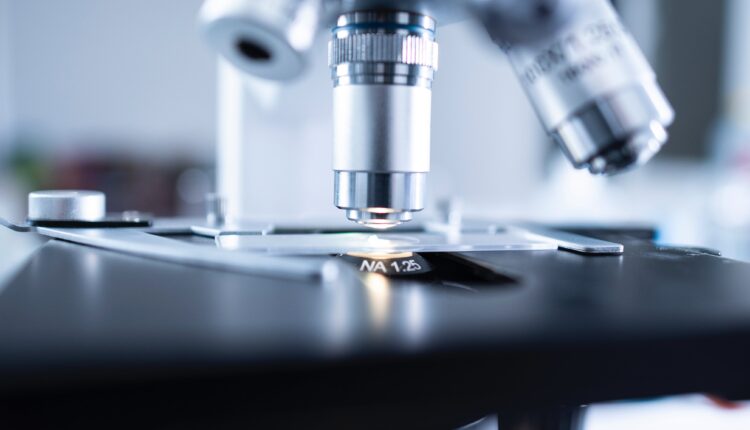Key Takeaways
- The biotech industry in San Diego has experienced significant growth and success, becoming a global leader in the field.
- San Diego has emerged as a groundbreaking epicenter for biotechnology, attracting top talent and innovative companies.
- Several key aspects, such as research institutions, collaborative networks, and supportive policies, have contributed to San Diego’s biotech boom.
- The dominance of the biotech industry in San Diego has resulted in various consequences, including economic growth, job creation, and advancements in healthcare and scientific research.
Unveiling the Ascendance of Biotechnology
The rise of biotech: How San Diego became a global leader is a fascinating story that began back in 1955-1965. With patient planning and visionary leaders, San Diego’s biotech industry started to take shape. Today, San Diego is recognized as a leading producer in the fields of renewable energy and alternative fuels. It all started when Hybritech, a San Diego-based biotech company, was sold for an impressive $450 million in 1986. This success story was just the beginning, as San Diego went on to establish itself as a center for innovation not only in biotech but also in wireless telephony. The world started to take notice of San Diego’s prowess in the biotech industry, setting the stage for its ascendance as a global leader.
Initial Spark: Emergence and Impact of Biotech
The rise of biotech in San Diego can be traced back to the years between 1955 and 1965. During this time, San Diego’s biotech industry began to take shape, fueled by patient planning and the emergence of leading pioneers in the field. One of the early leaders was Bio-Tech, a company that played a significant role in the development of renewable energy and alternative fuels. This initial spark laid the foundation for San Diego to become a global leader in biotechnology, with the city’s expertise and innovation resonating on a global stage.
One of the defining moments in San Diego’s biotech history came in 1986 when Hybritech, a company specializing in antibody research, was sold for a staggering $450 million. This record-breaking deal showcased the immense potential of San Diego’s biotech industry and put the city on the map as a leading producer of groundbreaking research and development. As other companies and research institutions flocked to the area, San Diego’s biotech sector continued to flourish, attracting investors, talent, and advancements in various disciplines. Today, the city stands as a hotbed of innovation and a premier destination for life sciences talent and industry operations from around the globe.
Bow Wave of Momentum: Advancements in Biotech
The Rise of Biotech: How San Diego Became a Global Leader can be traced back to the years 1955-1965. It was during this time that San Diego’s biotech industry began to take shape, thanks to patient planning and the foresight of its leaders. With a focus on Bio-Tech and the potential for growth in the fields of renewable energy and alternative fuels, San Diego quickly emerged as a leading producer in the biotechnology sector. One of the pivotal moments in the city’s biotech history came in 1986, when Hybritech, a San Diego-based biotech company, was sold for a staggering $450 million. This success set the stage for further advancements and solidified San Diego’s place as a global leader in biotech.
San Diego’s biotech boom has been fueled by a combination of factors, attracting venture capitalists and driving market opportunities. One area of significant growth has been in the field of cancer research, particularly for prostate cancer. San Diego’s biotech industry has become a hub for breakthroughs in cancer therapies, including the development of antigen tests and innovative treatments. The city’s vibrant ecosystem of biotech businesses, coupled with an abundance of life sciences companies, has provided the perfect environment for these advancements to thrive. As a result, San Diego has seen an explosion of biotech millionaires and a recognition of its contributions to the global biotech landscape.
San Diego: Biotech’s Groundbreaking Epicenter
San Diego’s biotech journey began back in 1955-1965, when the city was just a blank page in the history of biotech. The big bang moment came with the formation of Hybritech, a venture capitalized firm that focused on the development of diagnostic tools for cancer cells. This headline-grabbing innovation ignited a wave of excitement and joy, as it marked the beginning of San Diego’s ascent as a global leader in biotech. From then on, the city saw a string of successes and returns in the biotech industry, with companies like Ligand, IDEC, and Sanderling Ventures making significant contributions. San Diego became known as a hub for pioneering research and development, with breakthroughs in treatments for diseases like prostate and breast cancer. To this day, the city continues to be at the forefront of biotech innovation, with companies like Viracta Therapeutics conducting human testing for drugs targeting the Epstein-Barr virus. The presence of renowned research institutions, such as the Salk Institute and UC San Diego, further fuels the development of groundbreaking therapies. San Diego’s biotech industry is undoubtedly a testament to the city’s commitment to innovation and its position as a global epicenter for biotechnology.

Birthplace of Innovation: Biotech Evolution in San Diego
In the mid-1950s to 1965, the foundations for San Diego’s biotech evolution were laid. Patient planning and a commitment to innovation set the stage for what would become a global leader in biotech. It was during this time that biotech research institutions and companies began to emerge in San Diego, paving the way for future growth and success. One notable milestone was the sale of Hybritech for $450 million in 1986, solidifying San Diego’s status as a leading producer in the fields of renewable energy and alternative fuels. Additionally, the city became a center for wireless telephony, further establishing its reputation as a hub of technological advancement and innovation.
San Diego’s biotech evolution was not a sudden phenomenon; rather, it was the result of strategic planning and a collaborative approach. The region’s renowned universities, such as the University of California, San Diego, played a pivotal role in fostering research breakthroughs and attracting top talent. The city also benefited from a diverse range of industries, including defense, communications, and healthcare, which provided a fertile ground for the growth of biotech. Furthermore, partnerships between research institutions and businesses, as well as initiatives like the Biofuels Initiative, accelerated the development of the biotech sector in San Diego. Today, San Diego continues to be a thriving biotech cluster, known for its pioneering discoveries and contributions to the field of biotechnology on a global scale.
Charting the Course: San Diego’s Role in Global Biotech Leadership
San Diego’s journey to becoming a global leader in biotech began back in 1955-1965, when the region saw the rise of the biotech industry. The initial spark was ignited through patient planning and the visionary leadership of key individuals in the biotech community. Today, San Diego is not only a leading producer in the fields of renewable energy and alternative fuels but also a hub for cutting-edge biotech research and development. The region’s success can be attributed to its strong foundation built on strategic partnerships, innovative research institutions, and a skilled workforce. With a focus on sustainability and forward-thinking approaches, San Diego has become a key player in shaping the future of biotech on a global scale.
San Diego’s role in global biotech leadership can be seen through the numerous success stories and milestones achieved by the region. From the groundbreaking discoveries made at institutions like Scripps Research Institute and UC San Diego to the successful commercialization of biotech innovations by local companies, San Diego has consistently demonstrated its ability to push the boundaries of scientific research and translate those discoveries into real-world applications. The region’s biotech cluster, supported by venture capitalists and a strong entrepreneurial ecosystem, has nurtured a culture of innovation and collaboration that continues to attract top talent and investment. With its diverse range of expertise in areas such as cancer research, genetic engineering, and personalized medicine, San Diego’s biotech industry is not only driving economic growth but also making a positive impact on the lives of people worldwide.
Key Aspects behind San Diego’s Biotech Boom
San Diego’s biotech boom can be attributed to several key aspects. One of the main factors is the city’s rich history and strong foundation in biotechnology. Back in 1955-1965, San Diego’s biotech industry began with patient planning and the establishment of research facilities. The rise of biotech in San Diego was further fueled by the presence of leading biotech companies such as Hybritech, which was sold for $450 million in 1986. Additionally, the city’s focus on innovation and technology played a crucial role in its biotech success. San Diego became a global leader not only in biotech but also in other fields such as renewable energy and alternative fuels. The city’s commitment to research and development, along with its collaboration with universities and research centers, has created a fertile ground for biotech startups and entrepreneurs. The availability of venture capital and a strong talent pool of experienced professionals are also contributing factors to San Diego’s biotech boom. In conclusion, San Diego’s strategic planning, focus on innovation, and collaborative ecosystem have all played a significant role in the city’s emergence as a global leader in biotechnology.

Factors Fuelling Biotech’s Surge in San Diego
San Diego’s journey to becoming a global leader in biotech began back in 1955-1965, with patient planning and a strategic approach. It was during this time that the region’s biotech leaders, including Bio-Tech, laid the foundation for what would eventually become a thriving biotechnology hub. Today, San Diego is not only known for its advancements in biotech, but also as a leading producer in the fields of renewable energy and alternative fuels. San Diego’s biotechnology community continues to grow and innovate, with success stories like Hybritech, which was sold for $450 million in 1986, and the establishment of a center in wireless telephony, making San Diego a force to be reckoned with in the biotech industry.
One of the key factors fueling San Diego’s surge in biotech is the region’s abundance of resources and assets. With a concentration of top-tier research institutions like the Salk Institute and the Scripps Research Institute, as well as university laboratories, San Diego has a robust research capacity that attracts researchers and entrepreneurs from around the world. The region also boasts a strong network of industry trade groups and nonprofits, such as Biocom, that provide support and attention to the biotech community. Additionally, San Diego’s transportation infrastructure, including the international airport and convenient access to major highways, makes it easy for biotech leaders and stakeholders to travel and connect with one another. With such a wealth of resources and assets, it’s no wonder that San Diego has become a thriving biotech stronghold.
San Diego’s Infrastructure: A Catalyst to Biotech Growth
San Diego’s infrastructure has played a crucial role as a catalyst in the growth of the biotech industry. The rise of biotech in San Diego can be traced back to the period between 1955 and 1965 when patient planning and a spirit of innovation helped establish a strong foundation. One of the key factors that contributed to San Diego’s biotech success was the presence of leading academic institutions like UCSD, which provided a fertile ground for cutting-edge research and collaboration. The city’s strategic location and excellent transportation facilities, including an international airport, made it convenient for businesses to connect with global partners and markets. Additionally, the availability of state-of-the-art laboratories and research facilities, combined with a robust supply of skilled biotechnology workers, further fueled the industry’s growth. San Diego’s reputation as a biotech hub continues to attract top talent, leading to breakthroughs in areas such as stem cell research and disease diagnosis.
San Diego’s infrastructure has proven to be a game-changer for biotech start-ups and established companies alike. The city’s real estate perspective offers a unique advantage, with a premium on office space and proximity to other biotech enterprises, fostering collaboration and the exchange of ideas. The infrastructure in San Diego is specifically tailored to the needs of biotech businesses, with features such as fume hoods, high ceilings, and floor-load capacities in research facilities to accommodate specialized equipment and experiments. The city also boasts reliable power grids and plumbing systems, ensuring that biotech operations can run smoothly without any interruptions. Furthermore, San Diego’s commitment to sustainability extends to water use, with regulations in place to ensure responsible water consumption. From a transportation perspective, the city continues to invest in roadways and transit options, making it easier for employees to commute to work and for products to be transported efficiently. Overall, San Diego’s infrastructure provides the necessary support and resources for biotech companies to thrive and contribute to the city’s booming economy.
Consequences of San Diego’s Biotech Dominance
The consequences of San Diego’s biotech dominance can be traced back to its rise as a global leader in the field. In the 1950s and 1960s, San Diego’s biotech industry began with patient planning and strategic investments. This laid the foundation for the city to become a leading producer in renewable energy and alternative fuels. One of the key milestones in San Diego’s biotech journey was the sale of Hybritech for $450 million in 1986. This success story paved the way for the establishment of other biotech companies in the region, attracting venture capitalists and investors from all over the world. Today, San Diego is home to a thriving biotech sector, with a highly skilled workforce and cutting-edge research facilities. The city’s biotech dominance has not only boosted the local economy but has also had a global impact, with San Diego’s biotech companies contributing to groundbreaking discoveries and advancements in the field.
Global Impact: Biotech Success Stories from San Diego
San Diego’s biotech industry has seen a remarkable rise and is now recognized as a global leader. The journey began back in 1955-1965, when San Diego’s biotech pioneers laid the foundation for what would become a thriving sector. With patient planning and a strategic focus on biotechnology, San Diego emerged as a leading producer in the fields of renewable energy and alternative fuels. Today, the city boasts a rich biotech ecosystem that encompasses research institutions, manufacturing facilities, and a pool of talented biotechnology experts. The success stories of companies like Hybritech, which was sold for $450 million in 1986, and Qualcomm, a center for wireless telephony, have positioned San Diego as a world-class hub for biotechnology.
San Diego’s biotech success stories are not limited to monetary gains, but also to groundbreaking advancements in medicine and drug development. Companies in San Diego have been at the forefront of discovering new drugs and medicines that have the potential to revolutionize healthcare. For instance, IVAC Corp., a San Diego-based biotech firm, made significant strides in the development of a drug to cure AIDS by using human skin cells. The city’s biotech community has also been instrumental in the advancement of genetic research, manufacturing proteins for therapeutic purposes, and pioneering technologies for toxicology testing and transplantation. With its innovative spirit and a strong support system, San Diego continues to be a role model for the biotech industry.
Thriving Biotech Sector: A Boost to San Diego’s Economy
San Diego’s thriving biotech sector has played a significant role in boosting the city’s economy. The rise of biotech in San Diego can be traced back to the 1950s and 1960s, when the city began to establish itself as a global leader in the field. Patient planning and the vision of biotech leaders contributed to San Diego becoming a leading producer in renewable energy and alternative fuels. Notable biotech companies like Hybritech, which was sold for $450 million in 1986, further solidified San Diego’s position as a biotech powerhouse. In addition to biotech, San Diego has also established itself as a center for wireless telephony, adding to the city’s economic growth.
San Diego’s success in the biotech sector can be attributed to a combination of factors. The city’s world-class research institutions, such as the Scripps Institute of Oceanography and the J. Craig Venter Institute, provide a solid foundation for groundbreaking research and innovation. The availability of ample lab space and venture capital funding further fuels the growth of biotech startups and creates job opportunities for scientists and researchers. The city’s favorable climate, with abundant sunshine and beautiful ocean views, also makes it an attractive place for professionals in the biotechnology field to live and work. San Diego’s biotech sector has not only boosted the city’s economy but has also contributed to advancements in the field of biotechnology on a global scale.
Conclusion
The Rise of Biotech: How San Diego Became a Global Leader can be attributed to a number of key factors. Back in 1955-1965, San Diego’s biotech journey began with patient planning and the establishment of the Bio-Tech program at UCSD, led by faculty members such as Irwin Jacobs and Harold Urey. This laid the foundation for San Diego to become a leading producer in the fields of renewable energy and alternative fuels. The success of Hybritech, which was sold for $450 million in 1986, further cemented San Diego’s position as a biotech powerhouse. The city’s strong business culture, combined with collaborations between research institutions, industry players, and city leaders, has created a dynamic and thriving bioscience scene. San Diego’s robust economy, fueled by the expansion of the biotech sector, has led to significant job growth and economic impact. In addition, the city’s proximity to world-class research institutions such as the Salk Institute and UCSD, as well as its scenic beaches and favorable climate, have attracted top talent and fostered innovation. With all these factors at play, it is clear that San Diego’s biotech dominance is not only a success story for the city, but also a testament to the power of collaboration and strategic planning in driving advancements in the life sciences engine.
FAQS
What is biotechnology?
Biotechnology refers to the use of living organisms, or parts of living organisms, to develop or improve products, processes, or services. It involves the application of scientific and engineering principles to utilize biological systems and organisms for various purposes.
How did San Diego become a global leader in biotechnology?
San Diego became a global leader in biotechnology due to a combination of factors such as a supportive ecosystem, world-class research institutions, a skilled workforce, favorable business climate, and strong industry collaboration. These factors created an environment conducive to innovation, attracting biotech companies and fostering growth in the sector.
What was the initial spark that led to the emergence and impact of biotech in San Diego?
The initial spark can be traced back to the establishment of the first biotech company, Hybritech, in San Diego in the 1970s. Hybritech’s success and subsequent acquisition by a pharmaceutical giant inspired other entrepreneurs and investors to recognize the potential of biotechnology in the region.
How has San Diego contributed to advancements in biotech?
San Diego has contributed to advancements in biotech through its world-class research institutions, such as the Scripps Research Institute and the University of California, San Diego. These institutions have made significant breakthroughs in fields like genomics, drug discovery, and medical diagnostics, pushing the boundaries of biotechnology.
What makes San Diego the groundbreaking epicenter of biotech?
San Diego’s groundbreaking epicenter status in biotech can be attributed to its concentration of biotech companies, research institutions, and talent pool. The region fosters collaboration, knowledge-sharing, and innovation, creating a fertile ground for groundbreaking discoveries and advancements in biotechnology.
How has San Diego’s infrastructure acted as a catalyst for biotech growth?
San Diego’s infrastructure, including state-of-the-art research facilities, incubators, and technology parks, has played a crucial role in catalyzing biotech growth. These resources provide a supportive environment for startups and established companies to conduct research, develop products, and attract investment.
What are the consequences of San Diego’s dominance in biotech?
The consequences of San Diego’s dominance in biotech include increased job opportunities, economic growth, and a positive reputation as a hub for biotechnology innovation. Additionally, the region’s expertise in biotech has led to significant contributions to global health and advancements in medical treatments.
How has the thriving biotech sector boosted San Diego’s economy?
The thriving biotech sector has boosted San Diego’s economy by creating high-paying jobs, attracting investment, and generating revenue from the commercialization of biotech products. The sector has also created a multiplier effect by supporting other industries such as healthcare, manufacturing, and services.
Can you provide any examples of biotech success stories from San Diego?
Certainly! San Diego has witnessed numerous biotech success stories, such as the development of the first FD
How does San Diego’s role in global biotech leadership contribute to the overall industry?
San Diego’s role in global biotech leadership contributes to the overall industry by driving innovation, fostering collaboration, and setting high standards. The region’s expertise and success stories inspire other biotech hubs worldwide and encourage the exchange of knowledge and best practices, ultimately propelling the entire biotech sector forward.
What are the key aspects behind San Diego’s biotech boom?
The key aspects behind San Diego’s biotech boom include strong public-private partnerships, robust funding mechanisms, a supportive regulatory environment, a culture of entrepreneurship, and a highly skilled workforce. The convergence of these factors has created a fertile ground for biotech companies to thrive and innovate.
What factors have fueled the surge of biotech in San Diego?
The surge of biotech in San Diego has been fueled by factors such as the region’s strong scientific research base, access to venture capital and funding, supportive government policies, availability of skilled talent, and a collaborative ecosystem that encourages knowledge exchange and innovation.
In conclusion, why is San Diego considered a global leader in biotech?
San Diego is considered a global leader in biotech due to its concentration of biotech companies, renowned research institutions, groundbreaking discoveries, and contributions to the overall advancements in the field. The region’s collaborative ecosystem, innovative spirit, and economic impact further solidify its position as a global biotech leader.


Comments are closed.